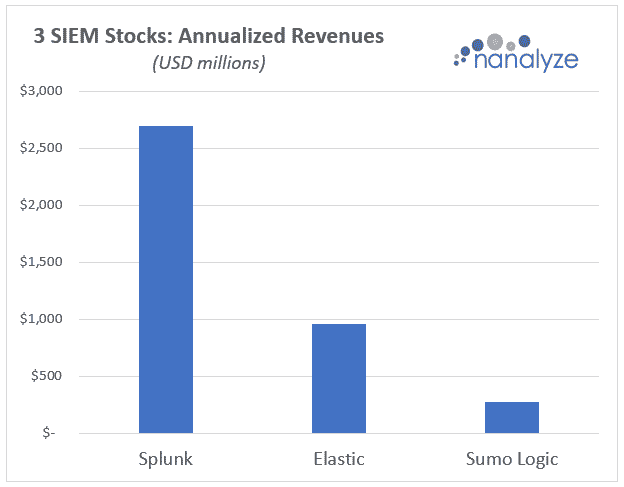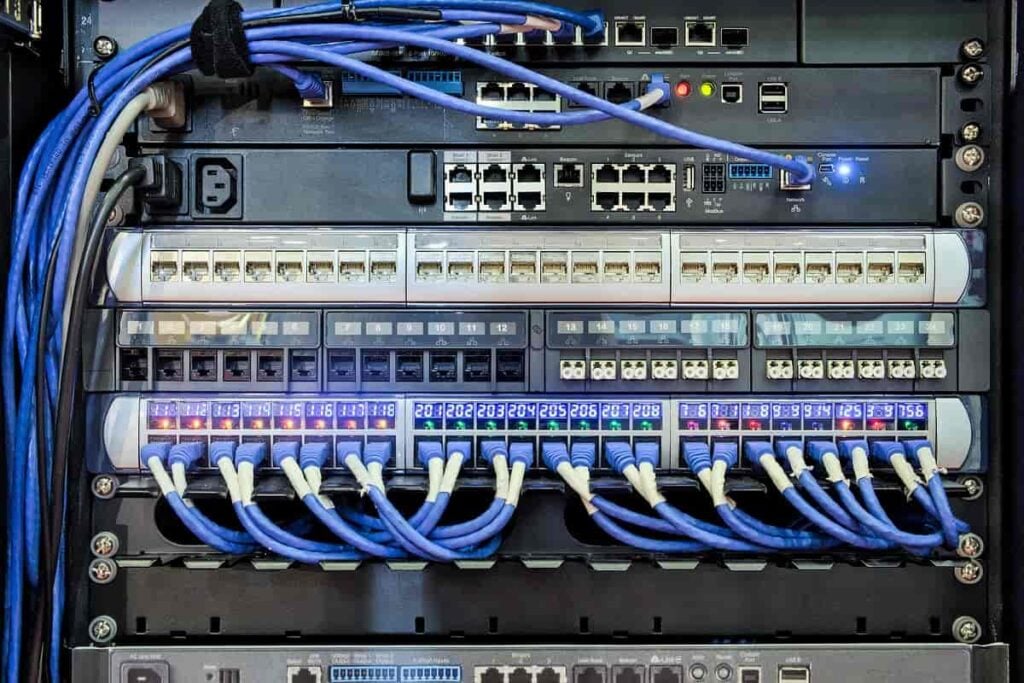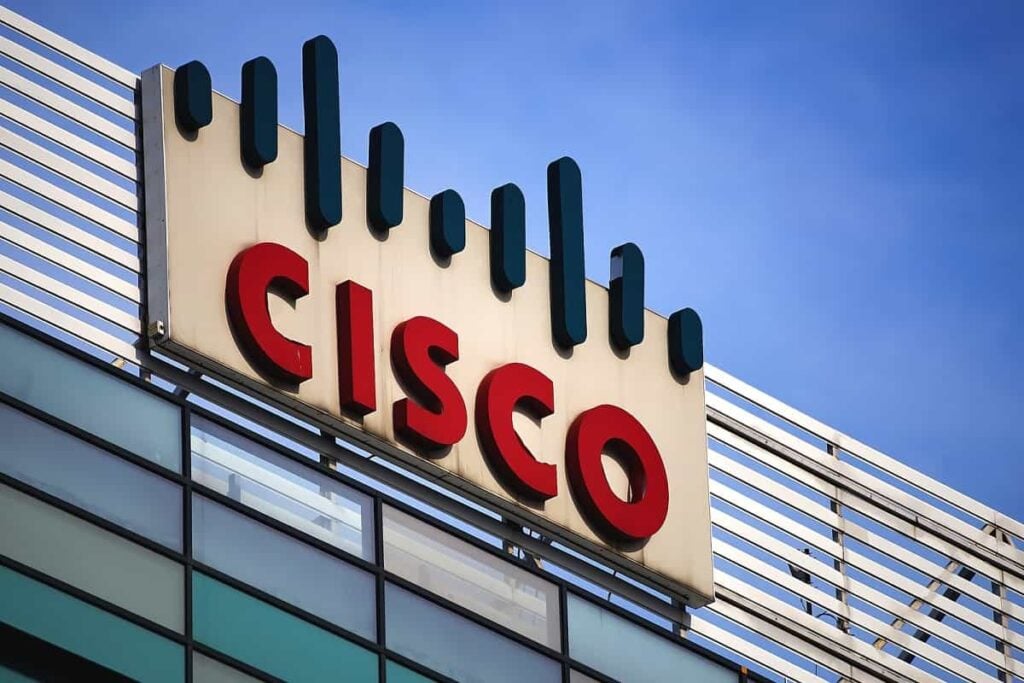5 Application Performance Monitoring Stocks
Table of contents

What’s compelling about software-as-a-service (SaaS) companies is that you don’t really need to know what they do. If a company produces high-margin software that other companies can’t get enough of, that’s generally an attractive investment. Even Warren Buffett, a man who doesn’t do tech and only invests in what he knows, invested in a SaaS company we profiled recently – Snowflake (SNOW). But we’d argue it does matter what a SaaS business does because of something we call “durability.” Providing an experience management tool to marketing teams like Qualtrics (XM) does is an expenditure that might be scrutinized come budget cut time. Contrast that to the UiPath (PATH) solution which reduces labor costs and it’s clear which company will fare better in today’s bear market.
That brings us to the topic du jour – application performance monitoring (APM) – something that starts to go down the jargon rabbit hole faster than we were hoping. Here’s how Gartner’s commonly cited framework describes the five dimensions of APM (note that the words “monitoring” and “management” are used interchangeably).

To the untrained eye, this might just look like a collection of buzzwords, but that’s where having an MBA comes in handy. An MBA finds a subject matter expert (SME) to explain a concept simply and then takes all the credit for it. Here’s APM explained in layman’s terms by an SME.
Every organization utilizes software extensively to conduct business. Think of how many applications Walmart might use, both off-the-shelf and homegrown. All these applications service end users, and some poor sap in the organization is ultimately responsible for service level agreements (SLAs) that ensure all apps are available for business-as-usual operations, both internally (employees) and externally (customers). APM tools allow IT professionals to manage the complex array of applications within their organizations to make sure businesses operate without interruption.
And what better place to find a list of APM vendors than the company that defined what APM is – Gartner.

We always invest in leaders, so we admit to gravitating towards the “leaders” quadrant and ogling whatever firm is the highest and rightest (both Datadog and Dynatrace seem to be running head-to-head). However, a look at last year’s quadrant shows Cisco has now moved from being a leader to a challenger, while computing enigma IBM has moved from being a niche player to a leader.

Did the methodology change, or did someone’s palm not get greased enough? With so much volatility in leadership rankings, perhaps the real usefulness of this quadrant is simply knowing who the major players are. If we exclude large firms like Cisco, IBM, Microsoft, and Ali Baba (none of which are a pure play on APM), we’re left with a set of five SaaS stocks, some of which have been raised frequently by our readers and subscribers.
5 Application Performance Monitoring Stocks
Let’s start by ranking them by market cap:

And by annualized revenues based on last available quarter…

…which means we can now calculate our simple valuation ratio to see how they’re relatively valued.
| Company | Simple Valuation Ratio |
| Datadog (DDOG) | 23 |
| Dynatrace (DT) | 12 |
| Elastic (ESTC) | 8 |
| Splunk (SPLK) | 6 |
| New Relic (NEWR) | 5 |
Before we go too far down this path, a bit of fair disclosure. We’re long Splunk, so we were surprised to see them in this mix because we’ve always classified them under a different Garner Magic Quadrant – security information and event management (SIEM).

Above you can see three companies classified under SIEM that also appear in the APM quadrant – Splunk, Elastic, and Sumo Logic. Let’s start by comparing SIEM to APM.
SIEM vs. APM
Anyone with IT experience understands what it means when someone says, “look at the event logs.” Most applications emit a form of data exhaust called an event log which captures everything that’s happening. In the world of databases, these might be called change logs. In the security world, these would be access logs. Every time a piece of software does something it creates a log of what’s happening for the primary goal of making it easier to troubleshoot problems. Collecting all the event logs of every type across an organization’s technology stack is what SIEM is all about.
As you can imagine, APM tools that monitor the performance of applications find lots of useful information in event logs which provide just some of the input needed to properly monitor application performance. In other words, if you’re a firm that’s involved in SIEM, you already have some of the necessary prerequisites needed to offer APM services. Gartner’s latest APM report spells this out for Splunk:
Splunk has a large presence in log monitoring and SIEM, which enables it to introduce and cross-sell APM solutions to existing customers.
Credit: Gartner
Going back to Gartner’s APM framework we can see five broad classifications of functionality, each of which can be deployed as its own product. That’s why you’ll see APM firms talk about how many products their customers are using which shows the breadth of their APM solution. Below you can see how Elastic refers to their offering in three broad segments, two of them being SIEM and APM which is why they’re included in both Gartner quadrants.

In Splunk’s investment deck, we also see a reference to security and observability.

These three SIEM firms – Splunk, Elastic, and Sumo Logic – are all pivoting into APM because it’s easy to upsell additional solutions to decision-makers they’re already talking to. If we were to pick the best SIEM firm of these three, we’d lean towards the one with the most market share. If revenues are a proxy for market share, then that would be Splunk.

Several years ago we wrote a piece on Why We’re Avoiding Sumo Logic Stock and noted the following commentary from Gartner on the state of the SIEM market which is both mature and competitive:
The SIEM market is characterized by a relatively small number of vendors that have large customer bases, and others with smaller, but rapidly increasing customer bases.
Credit: Gartner
That’s precisely why we invested in Splunk, one of a small number of SIEM vendors with a large customer base. And now that we’re sufficiently versed on how SIEM differs from APM, let’s move on to talking about the other three APM vendors on our list.
Dynatrace vs Datadog
At least according to Gartner’s latest quadrant, these three firms are the leaders in APM. To explore the differences between the two largest names – Dynatrace and Datadog – we turned to a U.K firm called Comparitech which has a team of 30 researchers focused on comparing software platforms. Here’s what they had to say about Dynatrace vs Data Dog:
When comparing Dynatrace and Datadog, which is the winner? It’s a dead heat. Both are suitable for businesses of all sizes, thanks to their scalable pricing structures. While Dynatrace emphasizes its AI features, Datadog matches that technology, although you have to read the details of the platform’s services to discover that. Those who want a managed service wouldn’t opt for Datadog because that company doesn’t offer that. On the other hand, those who [need] a SIEM system would include Datadog on their list of candidates to investigate, but not Dynatrace.
Credit: Comparitech
Now we’re confused. According to Comparitech, Datadog also offers SIEM capabilities, however, they’re not recognized in Gartner’s Magic Quadrant for SIEM, not even as a runner-up. That’s a pretty important point of contention because it would put Datadog into direct competition with Splunk. We’re also glad the artificial intelligence (AI) topic was raised because that’s precisely why we invested in Splunk, to begin with. In Dynatrace’s investor deck, we see the below quadrant which suggests their AI capabilities are superior to the rest.

As you know, the best AI algorithms are the ones that can train on the most comprehensive datasets, so would that put Splunk at an advantage? We’re not sure, but it’s a given that all these companies are using AI to provide clients with more automation and insights. What seems apparent is that this entire APM/SIEM space could use some consolidation as all these firms are addressing the same $50 billion total addressable market ($100 billion if you ask Splunk).
Which APM Stock to Buy?
Even with definitions being quite subjective, we can consider the five APM stocks from Gartner’s quadrant to be an equivalence class. For investors, that means we probably don’t need to be invested in more than one. Find a name you consider to be a leader and invest in them. If revenues are any indication of market share captured, then Splunk would be the leader, but Gartner sees Datadog and Dynatrace as the leaders based on analysis shared just last month. While we’ve been following Splunk’s drama for a while now, we’re not familiar with any of these other names. Based on the analysis we’ve conducted today, we believe it’s exceptionally difficult to try and pick an APM winner based on which product offering is superior, and key SaaS metrics appear to be similar across all these firms.
If Gartner’s team of highly paid MBAs offers up a different leader every year, then that implies there’s a great deal of subjectivity happening. If you’ve already invested in one or more of these firms based on your own convictions, stay the course. That’s what we plan to do with Splunk. If you’re thinking about investing in APM and are trying to pick a stock, choose one that’s most likely to survive our current bear market. Since all these firms have gross margins in the high 70s, we can look at runway as a measure of survivability. Datadog might be commanding their rich premium because they have $1.67 billion in cash and burned a whopping $21 million in 2021, a runway of about 79 years. Here’s how runway looks for all five names using last reported cash and burn rate for 2021.
| Cash | Last Full Year Burn Rate | Runway | |
| Datadog | 1671 | 21 | 79.6 |
| Elastic | 861 | 204 | 4.2 |
| New Relic | 829 | 250 | 3.3 |
| Splunk | 1447 | 1340 | 1.1 |
| Dynatrace | 463 | Profitable | N/A |
We might choose to dig deeper into some of these names if our paying subscribers find that useful. After all, it was paying subscribers who brought up most of the names in this list. Just drop a note in the comments section and let us know your thoughts.
Conclusion
In a bear market, we can be sure that purse strings will tighten, and companies won’t be keen on taking meetings from new vendors. That’s when upselling new products to existing customers becomes an important avenue for revenue growth. SIEM vendors who also provide APM solutions have an advantage over their competitors who only offer APM solutions. Regardless of which APM stock you decide to invest in, if any, you can be sure that once these platforms find their way into an organization, they probably won’t come under scrutiny when it’s time for budget cuts.
Sign up to our newsletter to get more of our great research delivered straight to your inbox!
Nanalyze Weekly includes useful insights written by our team of underpaid MBAs, research on new disruptive technology stocks flying under the radar, and summaries of our recent research. Always 100% free.















Both Datadog and Dynatrace look like quality stocks.
Datadog had profitable 2 last quarters. So currently both are formally profitable, but with EPS close to 0.
It seems to me Datadog is more expensive comparing to Dynatrace based on higher revenue growth prospects.
Agree. If we weren’t already in Splunk we’d be tempted to pick one and go long.
The article was less than 5 months ago, but:
DataDog P/S ratio is 13, at the time of the article was 23.
Dynatrace P/S ratio is 9.5, at the time of the article was 12.
So clearly DataDog got a lot cheaper, even though you can hardly say it is cheap.
It’s great to see valuations dropping so fast because then we can buy quality names on the cheap! We have some of these names in our research queue to do deep dives on.